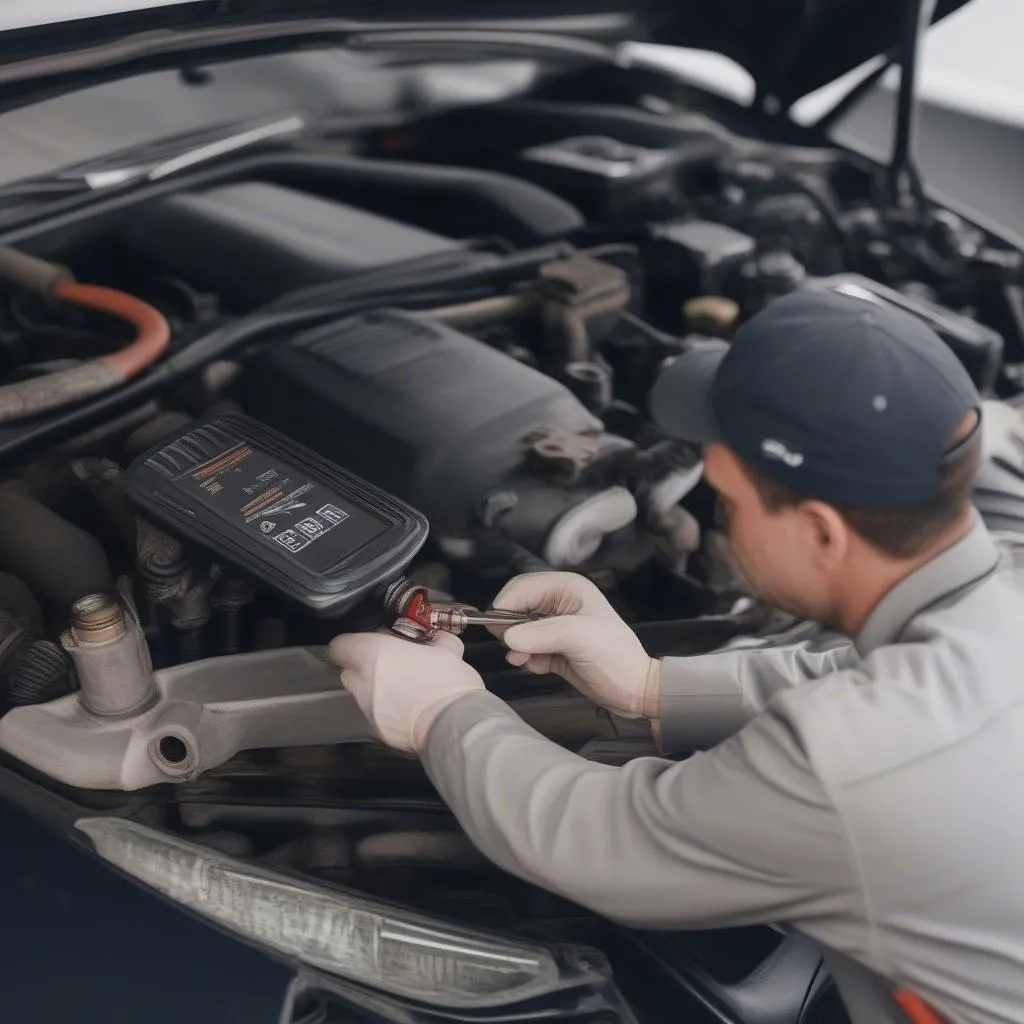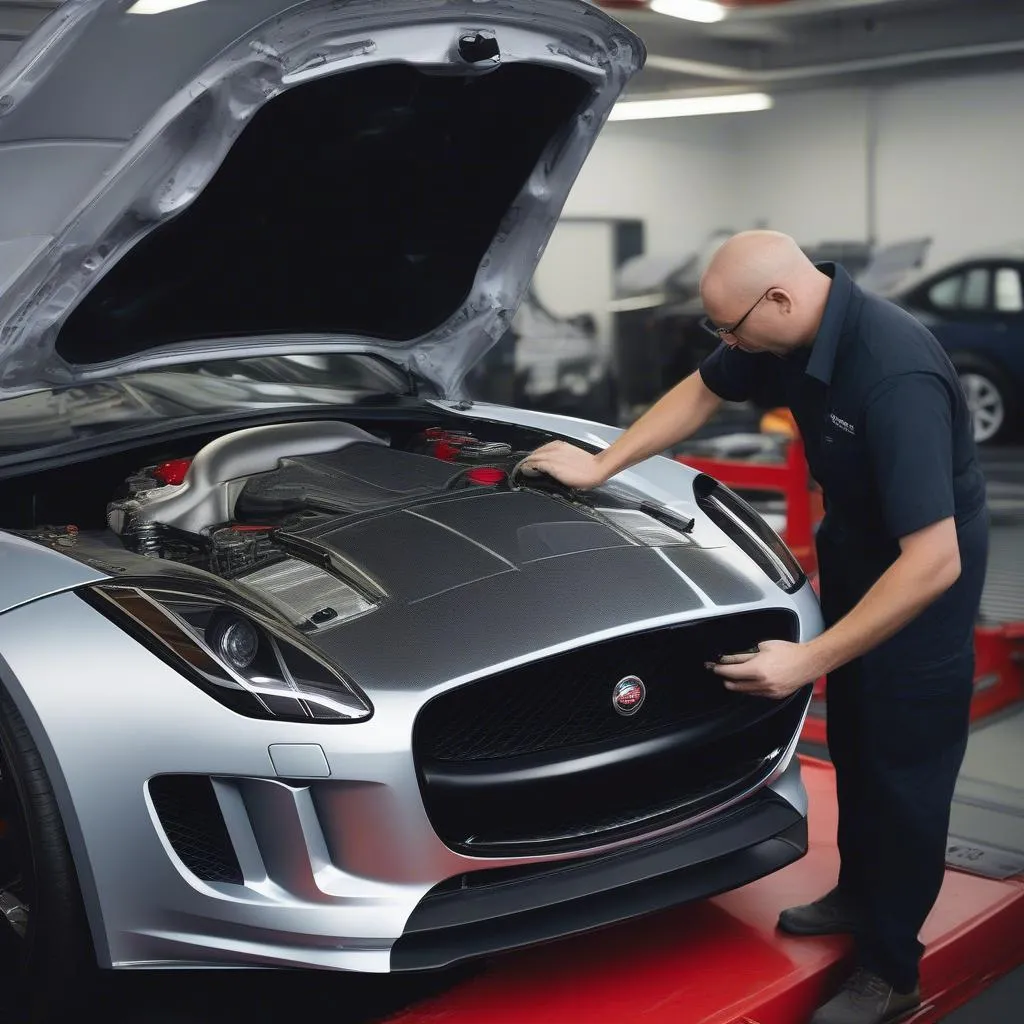“Just drove my F-Type through the heart of Texas, Houston heat and all, and suddenly – boom! Check engine light. OBD codes P0171 and P0174 are staring back at me. What gives?”
Sound familiar? You’re not alone. These pesky codes are a common headache for Jaguar owners, particularly those cruising around California or navigating the bustling streets of New York City. But fear not, fellow Jag enthusiast! This article dives deep into the mystery of these codes, offering a roadmap to understanding and tackling the issue head-on.
Unmasking the Culprits: P0171 and P0174
Before we embark on our troubleshooting journey, let’s break down these codes from a mechanic’s perspective:
- P0171: System Too Lean (Bank 1)
- P0174: System Too Lean (Bank 2)
Essentially, your Jaguar’s sophisticated computer system, the Engine Control Module (ECM), has detected that the air-fuel mixture in one or both engine banks is too lean. In simpler terms, there’s too much air and not enough fuel being ignited in the combustion chamber. Imagine trying to start a bonfire with a single twig – you need the right fuel-to-air ratio for optimal combustion, and your Jag feels the same way!
“These codes are like the canary in the coal mine,” says Michael Blackwood, a seasoned mechanic specializing in European cars at a renowned Los Angeles auto shop. “They often indicate an underlying issue that needs attention.”
A Deep Dive into the Lean Condition
Why is your Jaguar suddenly craving a richer fuel mixture? Several culprits could be lurking under the hood:
1. Vacuum Leaks: Imagine a tiny crack in your garden hose – water sprays erratically, right? A vacuum leak operates similarly, disrupting the carefully calibrated air intake system.
2. Faulty Oxygen Sensors: These sensors, often found near the exhaust manifold, act as your car’s “nose,” sniffing out the exhaust gases and reporting back to the ECM to fine-tune the air-fuel ratio. A malfunctioning sensor can send inaccurate readings, leading to a lean condition.
3. Fuel Delivery Problems: From a clogged fuel filter to a weak fuel pump, issues with fuel delivery can starve your engine of its much-needed juice, triggering those dreaded codes.
4. Mass Airflow Sensor (MAF) Malfunction: This sensor, typically located between the air filter and the throttle body, measures the volume of air entering the engine. An inaccurate reading can throw the entire air-fuel mixture out of whack.
5. Injector Problems: Just like a clogged artery can restrict blood flow, a dirty or faulty fuel injector can hinder the proper flow of fuel into the combustion chamber.
 Oxygen Sensor Check
Oxygen Sensor Check
Taming the Trouble Codes: A Step-by-Step Guide
Now that we’ve identified the potential suspects, let’s equip you with the tools to tackle this issue:
-
Start with the Basics: Before diving into complex repairs, check for simple culprits like a loose gas cap or a dirty air filter. You’d be surprised how often these seemingly minor oversights trigger engine codes.
-
Inspect for Vacuum Leaks: A visual inspection around the intake manifold, vacuum hoses, and throttle body can reveal telltale signs of leaks. Using a carburetor cleaner spray while the engine is idling can also help pinpoint leaks.
-
Consult a Professional: For complex diagnostics, especially if you suspect issues with oxygen sensors, fuel pumps, or MAF sensors, seeking professional help from a qualified mechanic specializing in European cars is recommended. They possess the specialized diagnostic tools, like dealer-level scanners for European cars, and expertise to accurately diagnose and repair the issue.
“Remember, a stitch in time saves nine,” advises Sophie Chen, author of “The European Car Owner’s Handbook.” “Addressing these codes promptly can prevent further damage to your engine and costly repairs down the road.”
FAQs: Your Burning Questions Answered
Q: Can I still drive my Jaguar with these codes?
While you might be tempted to ignore the check engine light, it’s not recommended to drive for extended periods with a lean condition. It can lead to reduced engine performance, poor fuel economy, and potentially more severe engine damage in the long run.
Q: How much will it cost to fix these codes?
The repair cost can vary significantly depending on the root cause. A simple vacuum leak fix might cost a few hundred dollars, while replacing a faulty fuel pump or oxygen sensors could set you back a thousand or more.
Q: How can I prevent these codes from reappearing?
Regular maintenance, including timely oil changes, air filter replacements, and fuel system cleaning, goes a long way in preventing these codes.
Beyond the Codes: Keeping Your Jaguar Purring
Remember, your Jaguar is a high-performance machine that deserves meticulous care. Understanding the language of its engine codes is crucial for ensuring its longevity and delivering that exhilarating driving experience Jaguar is renowned for.
Need expert help diagnosing and resolving your Jaguar’s OBD codes? Contact us on WhatsApp at +84767531508 for 24/7 support from our team of automotive specialists. We can also assist with the installation and operation of diagnostic tools to empower you with the knowledge to maintain your prized possession.
 Jaguar F-Type Service
Jaguar F-Type Service